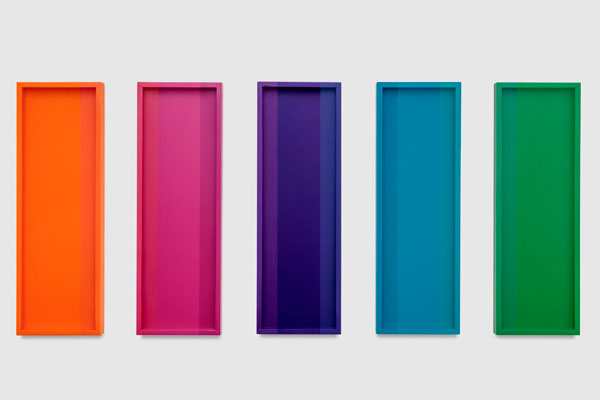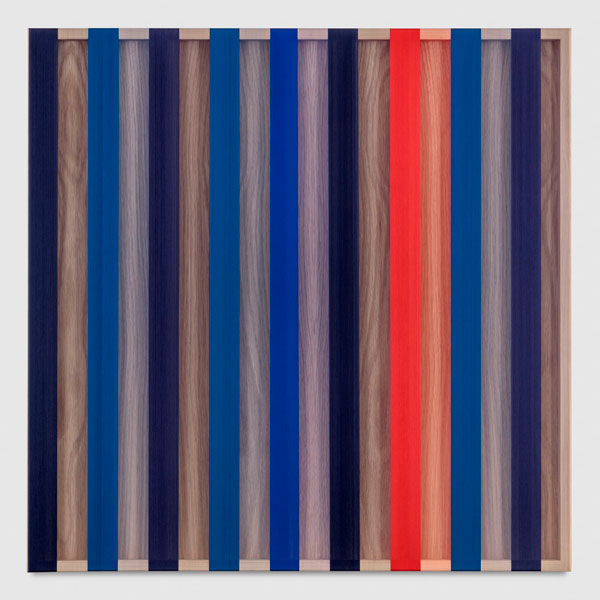Densely fretted and motion activated and crying out for every metaphorical use of the word string from art to design, music to physics, three new bodies of work by Brian Wills expand and deepen his relationship to his material muse—colored thread. A star in the painting-by-another-means cosmos, Wills has made a deep impression on the imaginations and intellects of audiences with his manipulations of thousands of painstakingly stretched, richly hued rayon threads, arranged so as to mimic the gradient pop of Op Art abstraction.
Wills iterates the Light & Space influences on his style by using his wood panels in reverse, so that the strings “hover” above the open box. The ambient light bounces around inside, glancing off their tensile, chromatic surfaces. This is a peacocking kaleidoscope of progression and sublimity in which every color on the visible and invisible spectrum seems to be represented. It should be a riot, but it’s a pageant. It should be a cacophony, but it’s a symphony. It’s almost synaesthetic. The discovery that the surfaces dramatically change with the viewer’s own movement not only engages the architectural space around them, but tends to elicit gasps of delight and a sudden onset of childlike wonder from even the most mature viewer.

Brian Wills, Untitled (Orange to Green Progression), 2017, photo by Joshua White, courtesy of the artist and Praz-Delavallade.
For the intellect, Wills also articulates a profound affinity for the legacy of minimalist and hard-edge painters. Art history lovers and especially students of the Los Angeles school of optically-charged, atmospheric and subtly variable abstract painting will recognize ideas about colors that are slow to emerge, surfaces designed to change over time, and the high drama of tonal half-steps. In the two newest series represented in this exhibition, Wills builds on that foundation to grow into more profoundly materialist directions. In many of the new works, he has painted the natural wood grain of the panel versos with radiant oil washes that transform the natural patterning without obscuring it, creating a heightened field over which the threads do their thing in a fresh, intense context.
The most surprising evolution is the enamel and polyurethane series, in which the thread is embedded, rather than hovering above the grounds, so that the strings function like drawing within a conventional painting—almost. Not for nothing, but he worked on these new pieces with Jack Brogan, the legendary plastics and resin engineer responsible for executing the greatest works of the entire Light & Space generation—and Brogan knows more about this territory than anyone else alive. They too have a whole thing about coming to life with motion and ambient light/surface depth, but while that effect is familiar, the means by which he achieved it is beyond inventive. And that sense of discovery indelibly involves any viewer with a taste for magic on an emotional level, taking them on a journey from heart to head and back again.



















0 Comments